
Here are some things that fashion weeks run on: sticky tape, double-shot iced lattes and baby toothbrushes.
The first thing to know about Mercedes-Benz Fashion Week is that, if you are working behind the scenes on the shows, for the most part, it’s hardly glamorous.
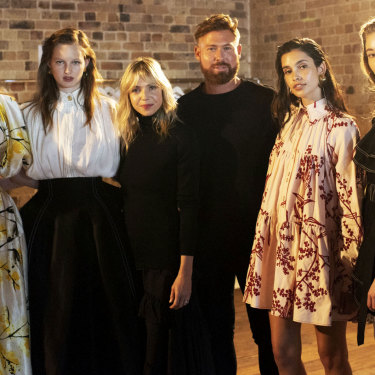
Fashion designers Edwina Forrest and Adrian Norris (in black, centre) of fashion label Aje.Credit:Christopher Pearce
As Adrian Norris, one half of the fashion label Aje (which opened fashion week on Sunday) puts it, most people don’t realise “how much hard work and long hours goes into making it look easy and seamless”.
Though, every single person who works on Fashion Week will say they’re hooked on its creativity, high energy and “organised chaos”.
Putting on a fashion show, says Norris’ business partner Edwina Forest, “brings back the excitement and passion of fashion, [it’s] what we’re all in it for”.
You’ve just got to get there first.
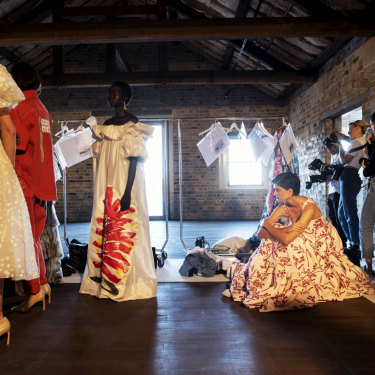
Backstage at the Aje show during the opening of Fashion Week. Credit:Christopher Pearce
Perhaps Phil Smith, who has been driving Fashion Week attendees for 11 years, will take you.
Smith, who stays admirably mum on the who's who he’s driven (“discretion is part of the job”) says it’s an exciting gig.
"You’re driving designers, international media, influencers I think they’re referred to these days … they’re all interesting in their own way,” he says.
During Fashion Week, the cars used by the media and guests to get to each show on time (sometimes a hectic job because shows run over schedule and there are traffic delays and Sydney parking to contend with) become pseudo offices and changing rooms.
“What happens in a Mercedes-Benz car stays in a Mercedes-Benz car,” says Smith.
Dominic Kaffka, vice president of creative and production at IMG - the agency that produces many of the fashion weeks around the world, and creative director of IMG’s creative agency FOCUS - has brought the visions of fashion designers to life for eleven years. He estimates he’s produced 60 to 70 fashion shows around the world.
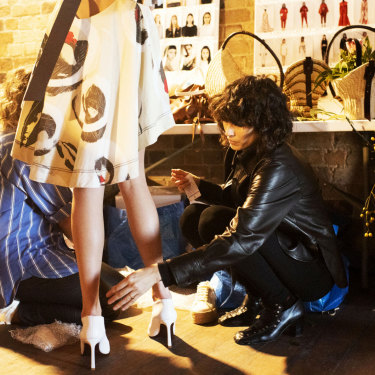
Stylist Gillian Wilkins.Credit:Christopher Pearce
You’ll find him running between shows on the day, always dressed in black, radio ear-piece on, his phone lit up with calls and emails in one hand, and that double-shot iced latte in the other. During fashion week, he says, he drinks six to eight of them on every one of the 14- to 16-hour days.
What does his job involve? A lot of spreadsheets for forecasting, model call sheets and accounting for the cost of every chair, prop or carpet used in the set designs. Kaffka connects designers with set, music and lighting counterparts to help execute their production.
Throughout the week, each show will send around 30 to 50 “looks” down the runway (big fashion shows like Chanel in Paris or Gucci in Milan can send up to 90) with each designer booking 20 to 40 models for their show.
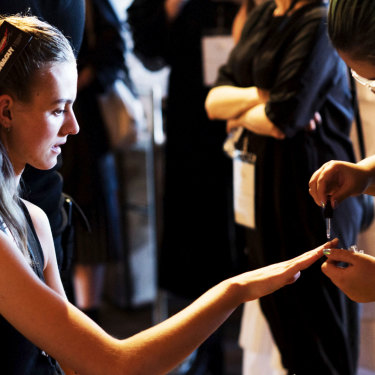
The team of make-up artists at the Aje show.Credit:Christopher Pearce
Designers and producers will start working on the show some six months out, but it will all be over in about six to eight minutes.
It makes sense, then, that Kaffka lives by the motto that every problem has a solution.
At the heart of it all, though, it’s about emotion.
“We are in the emotion transportation business,” says Kaffka
“[My job] is working with clients and designers to make their creative vision come to life, and helping them go through that process from the initial idea or mood board.”
A perfect show, says Kaffka, is one where the editors and buyers in attendance understand that vision and are emotionally moved.
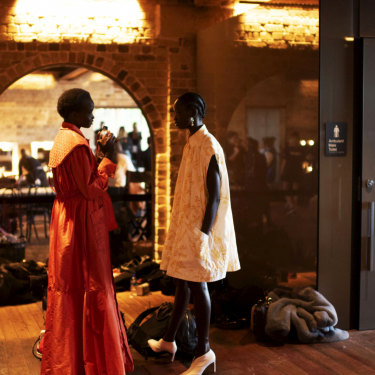
Models get ready to hit the runway.Credit:Christopher Pearce
In any case, during Fashion Week emotions tend to run high. That’s what happens when you mix creativity with time constraints.
However, the visions you might imagine of power-struck hair and makeup directors and stylists blaring at models and assistants backstage are, mostly, not the case.
Katy Reeve, national creative director for Toni & Guy who will run the hair looks for six shows this week, says the idea of nastiness and unbearable stress is a common misconception about what it’s really like backstage.
Sure the cramped, galley-like set-up of hair and makeup behind the scenes lends itself to a certain vibe – “there’s a lot of bodies in the room, which makes it feel more manic,” says Reeve.
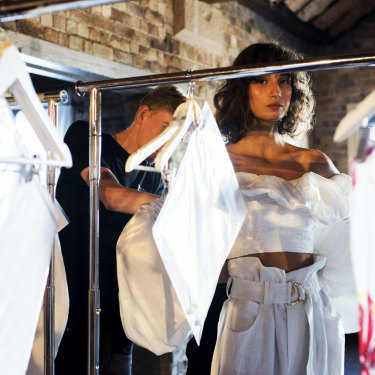
Putting the final touches ahead of the show.Credit:Christopher Pearce
But it’s what Reeve calls “organised chaos”.
“It’s organised to death,” she says.
It is Reeve’s job to interpret the hair brief sent to her from designers eight weeks out from go-time, attend the hair trials the week before the show, and then oversee a team of around ten hairdressers backstage in re-creating the look on the models. Each model gets about 40 minutes in the chair, and: the soft bristled baby toothbrushes? Great for teasing out wisps of hair around the face.
On the day of the show Reeve is there “silly early” to get the lie of the land, set-up everybody’s stations, figure out where the loos are and will lead her team of hairdressers from all around the country into a little pump-up ritual before the models arrive.
“I like to start the day with a pow wow, like Beyonce, we get into corner and hold hands,” she says with a laugh.
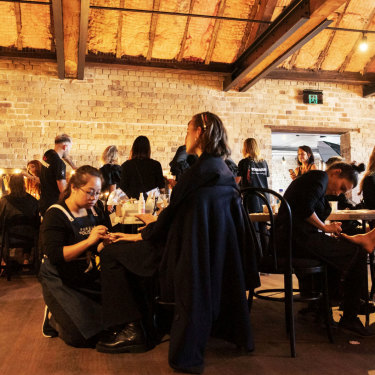
The "organised chaos".Credit:Christopher Pearce
“I like to put everyone’s mind at rest. It’s fun, we’re doing what we love, which is hair and if you’re not sure, just ask. We’re all here to support each other." Plus, she adds, “nobody notices when things go wrong” anyway.
Another important factor backstage? Snacks.
“We’re all running on adrenaline .. and have learned in the past we need to bring snacks,” says Lara Srokowski, the make-up director for Lancôme who will oversee the makeup looks created for several shows throughout the week.
Srokowski works closely with the fashion designers to realise their looks for the models, is on hand to help her teams and keep everything moving. She always has sticky tape along with her brushes in her backstage makeup kit because, as it turns out, tape can fix just about any makeup mishap.
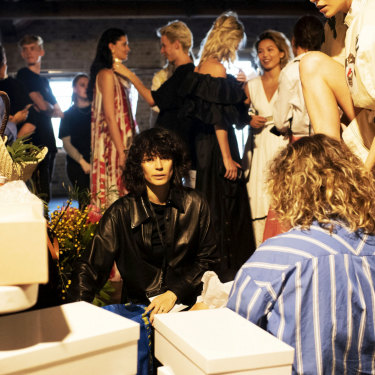
Brisbane-born Gillian Wilkins was the former fashion director at Elle UK.Credit:Christopher Pearce
Understanding a designer’s vision is a big part of what stylist Gillian Wilkins’ role is. The Brisbane-born, London-based former fashion director at Elle UK has worked on fashion shows in London and New York, but Aje is her first Australian Fashion Week show. Wilkins comes in a week or so before the show to help the designers with the model casting and then will edit down the looks and style them in a way that makes sense with what the designers want to say with the collection.
When it comes off, it is, says Wilkins, “euphoric”.
“By the time the show is done there is a real sense of celebrating, of all being in it together, and it’s really beautiful ... I really enjoy the bond you form with the designers."
Annie Brown is a lifestyle writer at The Sydney Morning Herald and The Age.






 Add Category
Add Category